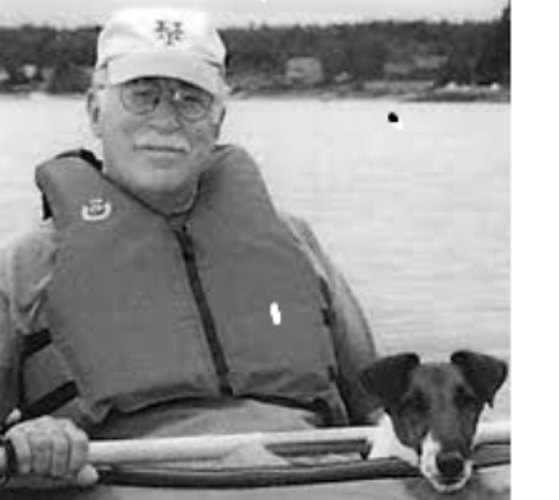|
Let me first say that I get the creeps whenever I encounter the new journalism buzz-phrase “long-form journalism.”
Long-form -- rhymes with chloroform. Why not just say “long,” since that seems to be what is being advertised. To be effective, the writer needs to blend facts, details, descriptions, observations, quotes, opinions, in an interesting manner. That is, the writer needs to be able to write, and the editors need to be able to edit. That’s long enough, right there. However, some long pieces are glorious, worth reading slowly, carefully, from beginning to end. I just read three over the weekend. The Passion of Roger Angell. By Tom Verducci. Sports Illustrated, July 21, 2014. Roger Angell has graced the New Yorker and his own books for the past half century with his writing about baseball (along with other elegant pieces.) On July 26, Angell will be honored at the Baseball Hall of Fame in Cooperstown, N.Y., with the annual J.G. Taylor Spink Award, the highest honor given by the Baseball Writers of America. (Angell has never held a BBWA card since the New Yorker does not cover baseball on a daily basis.) Tom Verducci, a Sports Illustrated writer and television commentator, has proven worthy of his subject, accompanying Angell to the cottages and docks and sailboats of his beloved Maine, and even to the cemetery, containing the headstones for Angell’s mother, Katharine Angell White, his step-father, E.B. White, his brother, Joe, his daughter, Callie, and Angell’s wife, Carol, whom he misses badly, and for Angell himself, the stone (1920-) lacking only a final date. To his immense credit, Verducci captures the bittersweet outlook of a man who is 93 and has much left to say about baseball, about life, about writing: “I used to have a terribly hard time starting, because when I wrote I didn’t do first drafts. I wrote the whole piece on typewriters and would x out and use Scotch tape. I think I began to realize that leads weren’t a big problem. You can start anywhere.” For many decades, the best baseball writing of the year would arrive in the mail at the end of spring training -- Roger Angell’s report on spring training, often from the baseball hangout, the Pink Pony in Scottsdale, Ariz., now defunct. The first Angell of spring was a sure sign we would outlive winter, real life was resuming. His pieces could have gone on forever, as far as this reader was concerned. Amazingly, long-form journalism had not yet been invented. Wrong Answer: In an era of high-stakes testing, a struggling school made a shocking choice. By Rachel Aviv. The New Yorker. July 21, 2014. Speaking of trends, the current infatuation with testing scores led the Atlanta school system to encourage cheating. Rachel Aviv followed one idealistic educator, feeling forced to abandon actual teaching and caring for the young, down the path to Watergate-style chicanery. Great reporting provides a guide to this tragedy. The Trials of Graham Spanier, Penn State’s Ousted President. By Michael Sokolove. The New York Times Magazine. July 20, 2014. The former president of Penn State allowed a seasoned magazine writer to visit him in the wreckage of the child-abuse case involving Jerry Sandusky, a former defensive coordinator with the football team. The article says Spanier was brutalized by his own father; I never knew that. Now Spanier faces legal charges that he failed to investigate the possibility that Sandusky was sexually abusing young boys within the football “program.” There is no doubt Spanier and Joe Paterno were clueless in coping with developing hints and charges about Sandusky. (I listened in on a Paterno press conference in 2008; in retrospect, this was not the same man I had followed for decades, but Spanier could not get him to retire.) Sokolove makes the case that the institution of Penn State was willing to chuck Spanier and Paterno into history and pay $60-million to the loan-shark-minded N.C.A.A. for the privilege of being able to make more money as a football “program.” Note: I just discovered a piece by James Bennet in the Atlantic last December, decrying the spawn of longform-journalism. It’s really good. And not that long. 7/23/2014 07:15:56 am
George: Great reflection on long-form, whatever it is, and for flagging the Verducci article on Roger Angell. He's a national treasure. His autobiography, which I read some years ago, is a terrific read (and great New Yorker history), as is his New Yorker reporting. By the way, is that a NY Mets cap he's wearing in the picture? :) Cheers, Peter
George Vecsey
7/23/2014 08:27:52 am
Peter, thanks, my response is right above. Roger, being a traditionalist, is quite likely to honor the days of Ott or Sal the Barber. I will check.
Bob
7/23/2014 09:19:13 pm
Thanks for the tip about the Angel article. I read the other two and liked them, so I'm sure the SI piece will be good! Subscribed for 30 years and stopped only because the postman we would pinch half the issues when I moved to Malaysia - thank you for pointing it out.
George Vecsey
7/24/2014 01:18:52 am
The New Yorker just announced a new on-line policy, in two stages. I have to say, as a reader mostly these days, that the NYT, SI and New Yorker produce such quality articles -- some of them blessedly long -- that I applaud their firewalls. GV 7/24/2014 04:00:35 am
Case in point about lengthy, quality articles...the very lengthy NYT investigative piece yesterday on the Cuomo commission quashing. Reassuring to know that kind of journalism is alive and well -- if rare these days.
George Vecsey
7/24/2014 10:39:09 am
I love some investigative pieces. The NYT did one on how Wal-Mart bribed officials and took over a sacred valley near the Valley of the Moon (Teotihuacan, Mexico) I read every word -- a primer on corporate and personal dishonesty. And many others are just long-form. GV 1/20/2017 04:27:32 am
Thanks for the great and interesting tips it is very useful for everyone thanks. 2/27/2017 12:13:46 am
I love your article it is really good thanks for this amazing website. 6/27/2017 01:35:50 am
Encouraged towards Ludhiana Escorts Agency greatest site!! You're in the really correct location if you like to savor the trip of paradise. If you should be a grownup and eighteen +, we shall allowed anyone having a large grin . We're irresponsible for that which you do within our site. 8/10/2017 04:40:08 am
since our very first thing is the fact that behave relating our customers actions and except from all of this our women appear really ancestry even yet in easy gowns if you turn into a normal person in Dehradun Escorts then you definitely may understand that you've another encounter among all of the escorts providers that you simply visit till Nowadays. Comments are closed.
|
Categories
All
|











